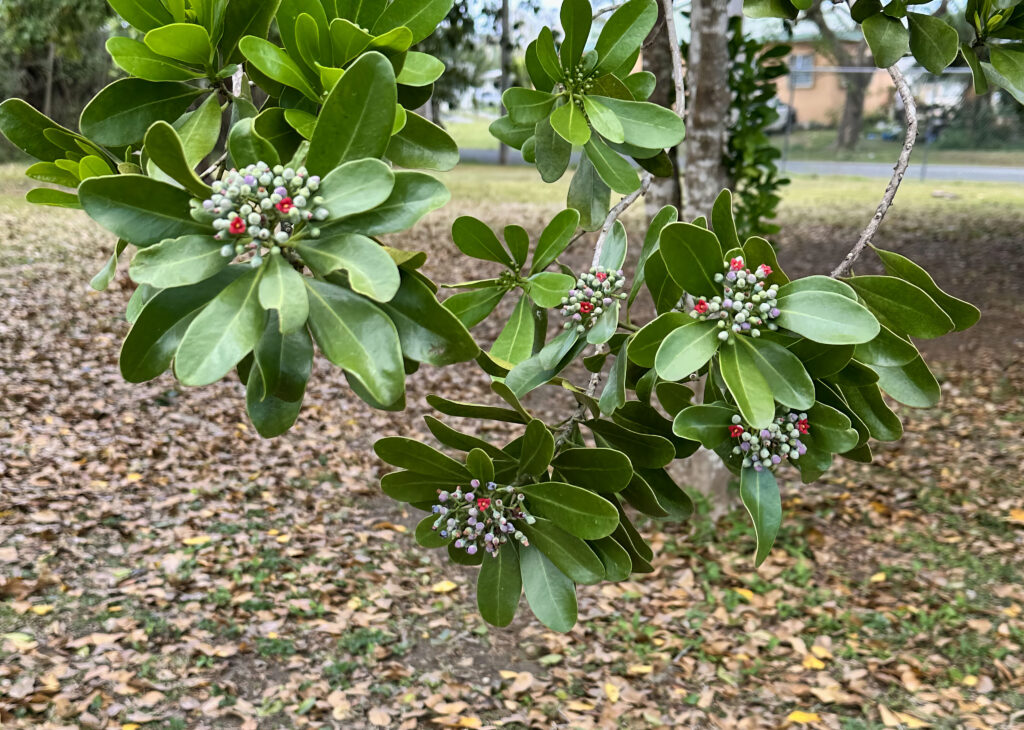Wild Cinnamon Tree
Scientific Name: Canella winterana
Common Names: Wild Cinnamon, Cinnamon Bark, White Cinnamon, Canella, Bahama Canella
The Wild Cinnamon Bush (Canella winterana), also known as Cinnamon Bark or White Cinnamon, is an evergreen shrub or small tree native to southern Florida and the Caribbean. It typically grows between 15 to 20 feet tall, though it can reach up to 30 feet under optimal conditions.
Botanical Characteristics:
- Leaves: The plant features dark green, leathery leaves that emit a spicy fragrance when crushed.
- Flowers: During summer and fall, it produces clusters of small, aromatic purple and white flowers.
- Fruits: Following the flowering period, bright red berries develop, which are attractive to various bird species.
Habitat and Cultivation:
Wild Cinnamon thrives in full sun to partial shade and prefers well-drained, alkaline soils. It is notably salt-tolerant, making it suitable for coastal landscapes. This species is often found in coastal hammocks and is considered endangered in Florida.
Ecological Importance:
The plant serves as a nectar source for butterflies, including the Schaus’ swallowtail, and its dense foliage provides shelter for various wildlife. Florida Wildflower Foundation
Uses:
Traditionally, the bark has been used as a spice and for medicinal purposes, while the wood, known as Bahama whitewood, has been utilized in carpentry.
Incorporating the Wild Cinnamon Bush into landscapes not only enhances aesthetic appeal but also supports local ecosystems by attracting pollinators and providing habitat for wildlife.

